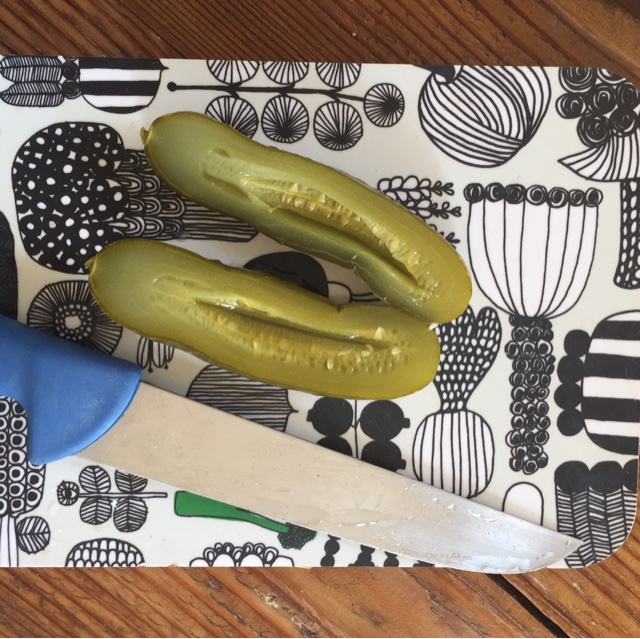People often ask for my recipe of pickles. I make them Finnish style, the way I am used to eating them, so here you go!
Fermenting pickles is a little bit more trickier than making sauerkraut or fermenting some other vegetables. Let me tell you the tricks for good pickles that are not mushy!
1. Choose cucumbers that are meant for pickling. They have a hard skin. Choose cucumbers that are firm and as fresh as possible. Use whole cucumbers (smaller often are better) instead of slicing them (that works too).
4. Make the brine. The ratio of salt and water I use is 25 grams per 1 liter of water (I know, you will just have to figure that out! :)). Dissolve salt in the water. Use non-chlorinated water. Chlorine can kill the good bacteria.
5. Place cucumbers and spices, and a source of tannin in layers in a glass jar. I recommend using airlock jars to ensure success. For spices you can use a few whole cloves of garlic, some fresh horse radish, and fresh dill leaves, stalks and flower heads. (A spoonful of mustard seeds are nice too if not on AIP). A source of tannin can be grape leaves, oak leaves, horse radish leaves or even black tea leaves. In Finland they use often fresh black currant and raspberry leaves. I have even used blackberry leaves from my garden.
6. Leave an inch or two of space for the weight to keep the cukes under the brine and for some air space. To keep pickles under the brine, I often use carrot sticks in the opposite direction than the pickles under the weight.
7. Pour brine over the cukes and makes sure they stay under the brine, especially if not using an airlock! Then it is critical to ensure anaerobic conditions and avoid mold etc. harmful growth. Leave a little space before closing the airlock jar. Add some water to the airlock.
8. Put the jar in a dark place and ferment in room temperature for about 10 days. Do not open the jar in between. After 10 days move to the fridge. The pickles should be ready in a few weeks. You can slice one open and if there are still white spots or areas inside, it is not quite ready in my opinion.
Some people check the pH of the brine before moving the cucumbers to the cold. If the pH is less than 4.2, the brine protects the pickles from harmful bacteria growth. Below you can see two jars of pickles ready to ferment. One is with mustard seeds, the other without. Both have dill, one even the dill blossoms and for tannin to this one I added blackberry leaves.



























.jpg)

.JPG)
















